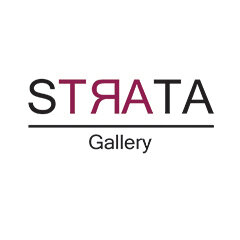
Millian Giang Pham
Viet Kitsch: Lacquer Luster
The frustration of being partially understood was most prevalent when I conveyed complex ideas in a mishmash of Vietnamese and English to my parents. Our half-baked conversations usually devolved into one-sided views reinforced by traditional gender roles and outdated notions of filial piety. My parents—like many immigrant parents—hoped their children would thrive in the American landscape, but without losing the familiar roles and values of their generation and a different land. Convincing my parents to consider my perspective would have required more than a mastery of multiple languages and social codes. A lack of time and cultural resources drove me to seek out visual arts not only as a language to fill the voids in my verbal expression but also as a solace for not being seen and understood. To be successful, I had to constantly code-switch to the appropriate language for the situation, creating a hybrid experience that was not always fruitful but indicative of my daily experience.
My art making is code switching. Each work experiments with the aesthetic codes and conceptual framework of multiple cultures, art mediums, and languages. I test out new ways to convey an idea through a pluralism of perspective by switching visual codes through juxtaposition and obfuscation. In my overarching investigation on text and images, small compositions switch from printed images to hand drawn text. Larger compositions switch embroidered text with painted imagery to reevaluate the framework of fine art and seemingly lowbrow craft. I use images such as durian, jackfruit, rambutan, cashew, and other exotic fruits to allude to class warfare and Otherness—issues that affected my ability to communicate with my parents and many people around me. In the series Viet Kitsch: Lacquer Luster, I mix images and texts from my native Vietnamese with adopted American cultures. Romanticized images of Vietnam rural living are mixed with texts that question traditional notions of gender, class, and culture. I’m interested in highly abstracting these words to the point of near illegibility, hiding phrases and presenting them as ambiguous visual puzzles. Since the answer to each puzzle is provided in the title of each piece, the works aim to reorient the viewer toward issues beyond mere appreciation of surface elements. It is an opportunity to navigate toward deeper dimensions through the mode and code switching of visual and verbal perception.
After trampling in the muddy rice fields of rural Vietnam then misreading product labels in the United States, Millian Pham received her BFA in painting and printmaking from the University of Tulsa in Oklahoma and her MFA in sculpture from the University of Florida. Pham’s art practice stems from her traumatic childhood in Vietnam and the painful adaptation in her adopted America. Her works highlight the intangible effects of social, political, and family structures on the body. She works with the materials of sculpture, fiber, video, drawing, collage, and verbal language through larger installations and performances. Her visual research has been exhibited nationally and internationally in Canada, Pakistan, Korea, and across the United States. Pham was an artist-in-resident for the I-Park Artist Enclave, the Hambidge Art Center, the ACRE program, Santa Fe Art Institute Labor Residency, and the Virginia Center for Creative Arts. She is currently the Art Editor of Broadsided Press, Treasurer of Strata Gallery in Santa Fe, New Mexico, and serves in various posts on professional organizations such as FATE and SECAC. She has taught at Arrowmont School of Art and Craft in Gatlinburg, TN and is currently the Studio Art Foundations Coordinator and Assistant Professor of Art at Auburn University in Alabama.







